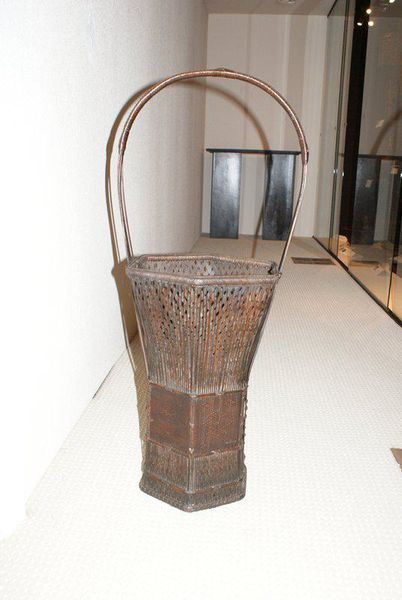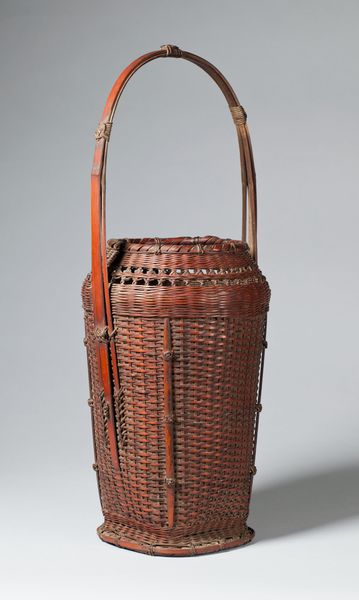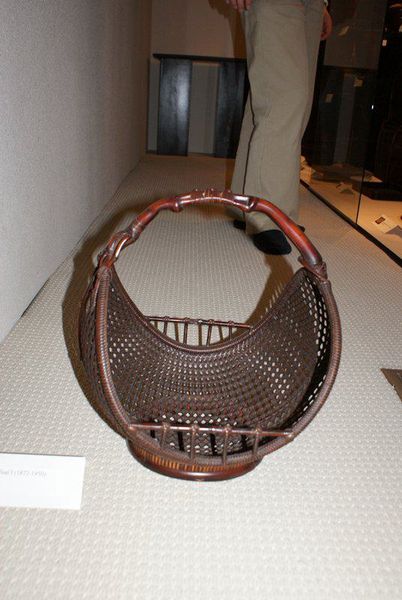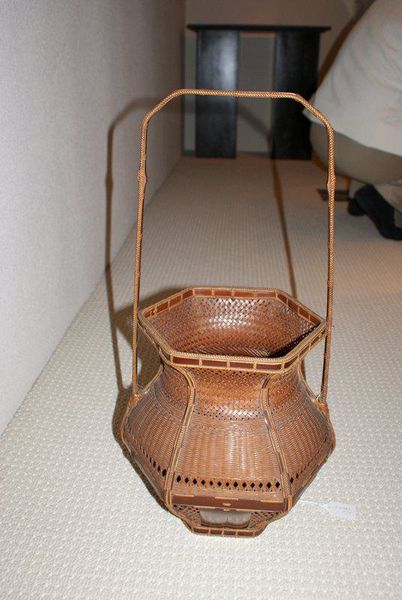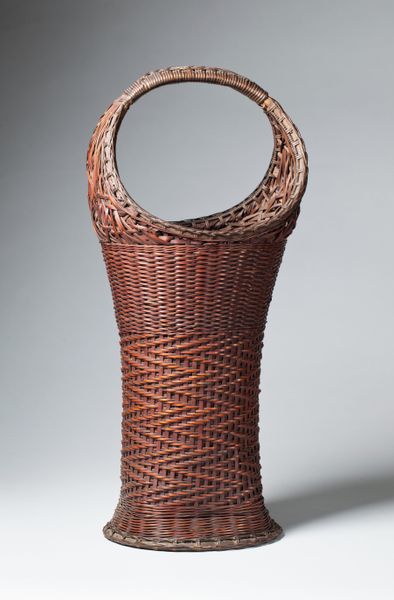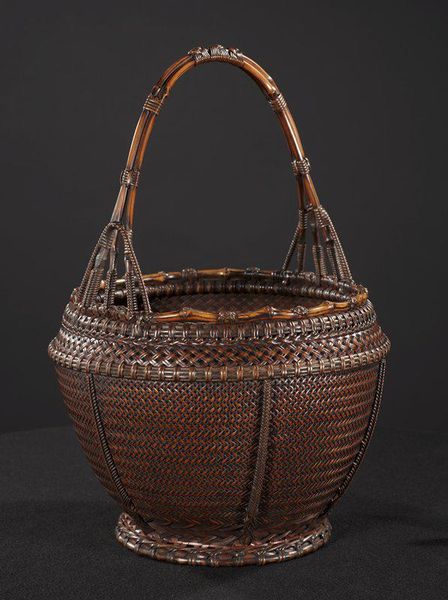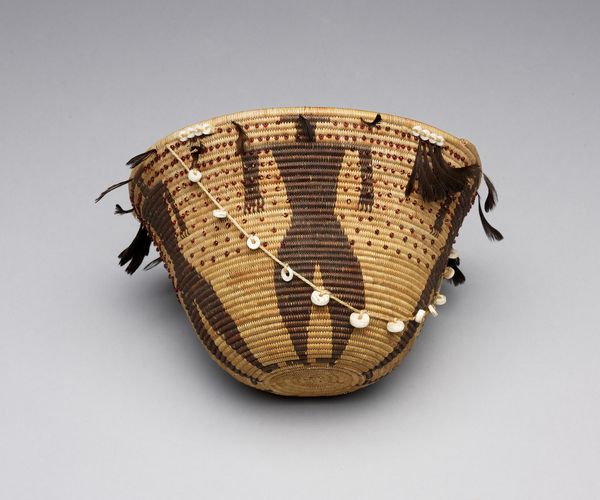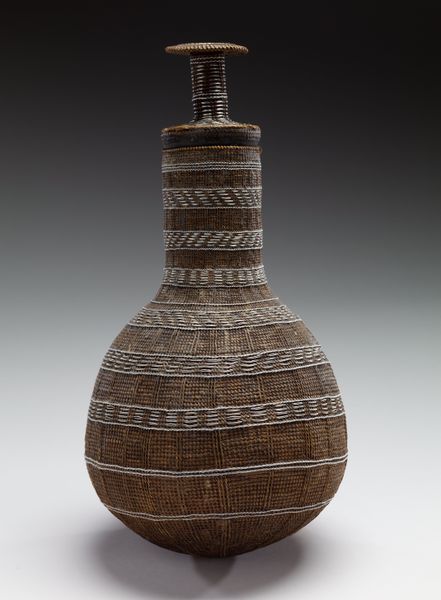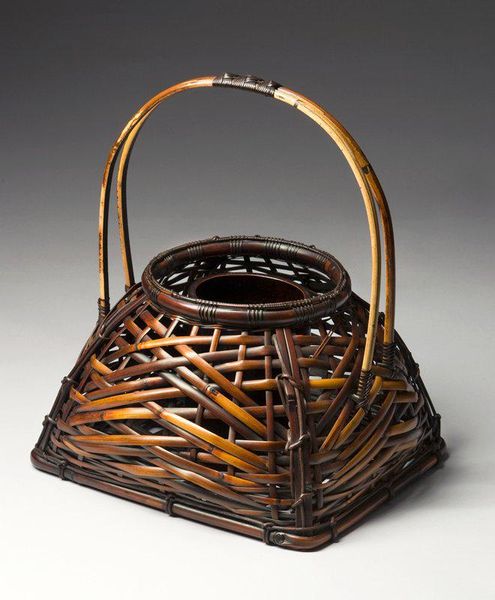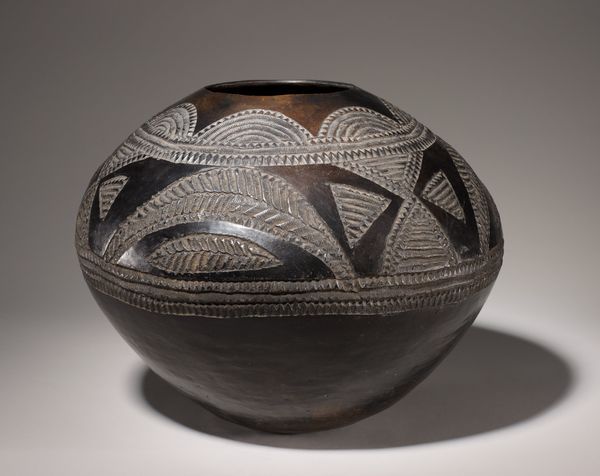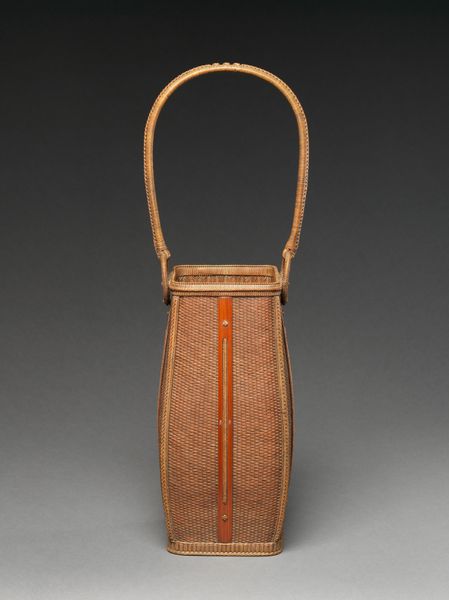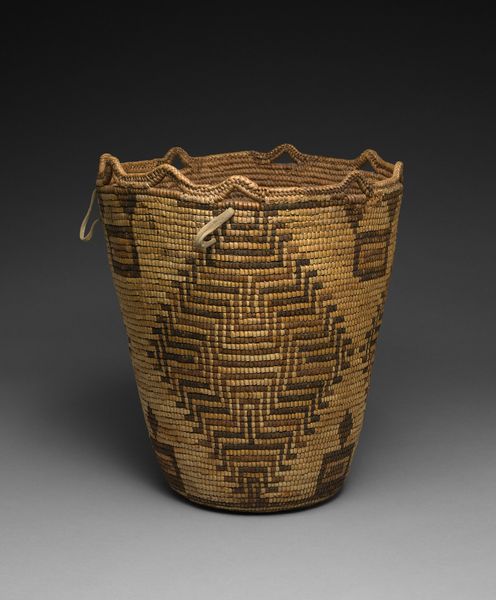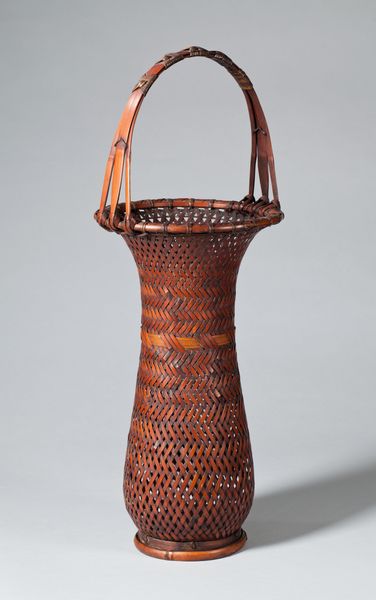
mixed-media, fibre-art, ceramic, wood
#
mixed-media
#
fibre-art
#
organic
#
asian-art
#
ceramic
#
japan
#
form
#
ceramic
#
line
#
wood
#
decorative-art
Dimensions: 30 1/2 × 14 1/16 × 6 in. (77.47 × 35.72 × 15.24 cm)
Copyright: Public Domain
Editor: Here we have a mixed-media piece called "Narrow," created by Chikusansai around the 19th century. Looking at it, I'm struck by the sheer amount of handwork involved. It looks like the structure is woven from various natural fibers and perhaps even some ceramic elements? How would you interpret this piece through its materials? Curator: Well, considering this basket's materiality opens a path to understanding 19th-century Japanese culture. What if we consider the specific materials and techniques? The woven bamboo and the subtle variations in color aren't just aesthetic; they signify a dialogue between the maker, the material, and the environment from which it came. Editor: So, the choice of materials is significant? I see a connection with nature, a certain reverence maybe? Curator: Exactly. But beyond reverence, we can consider the social context of production. Who was Chikusansai, and what kind of labor went into creating something like this? It seems both functional and decorative. Where does that boundary lie and who defined it? Editor: It makes me think about the division between art and craft. Something functional elevated to an art object through time and display? Curator: Precisely. And consider the consumption of such an object. Was it for personal use, a gift, or commissioned? The basket then speaks to hierarchies of taste, value, and potentially, trade networks. How does that frame our understanding? Editor: That's fascinating! Looking at it now, I see more than just a basket. It is a complex web of materials, labor, and cultural values embedded in its form. I never considered those questions about functionality and commissioning of the piece! Curator: Exploring the material conditions helps to unravel complex layers of social history often overlooked in traditional art historical approaches. Focusing on its materials invites us to examine the world it inhabited, not just admire its aesthetic form.
Comments
No comments
Be the first to comment and join the conversation on the ultimate creative platform.
